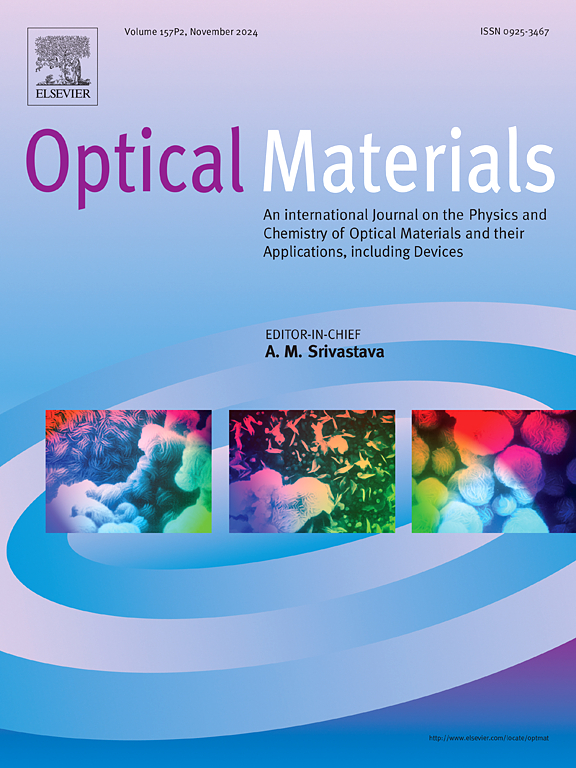Incomplete plasmonic hybridization induced broadband band-stop filtering in metasurface
IF 3.8
3区 材料科学
Q2 MATERIALS SCIENCE, MULTIDISCIPLINARY
引用次数: 0
Abstract
Surface plasmon hybridization improves the physical properties of the plasmonic modes and opens up new possibilities for light manipulation at the nanoscale. In this paper, we investigated the broadband band-stop filtering characteristics of a metasurface composed of two metal nanocube arrays separated by a dielectric film. The filtering bandwidth of over 100 nm in the visible region was demonstrated, with a transmittance of less than 0.5 % across the whole filtering range. The incomplete plasmonic hybridization model was proposed, which accurately describes the broadband spectral response. In contrast to full hybridization, incomplete hybrid modes can contain varying percentage admixtures of the primitive modes, allowing incident light in a broadband range to meet the momentum-matching condition. The analysis of the dependence of the reflection, absorption, and transmission spectra on the structural parameters further validates the results. The proposed broadband filter was experimentally validated and found to be in good agreement with numerical results. Our in-depth analysis of the hybrid coupling mechanism opens up a new avenue for designing broadband optical devices.
元表面不完全等离子杂化诱导的宽带带阻滤波
表面等离子体杂化改善了等离子体模式的物理特性,为在纳米尺度上操纵光提供了新的可能性。在本文中,我们研究了由两个金属纳米立方体阵列组成并被一层电介质薄膜隔开的元表面的宽带带阻滤波特性。结果表明,在可见光区域的滤波带宽超过 100 nm,整个滤波范围内的透过率小于 0.5%。提出的不完全质子杂化模型准确地描述了宽带光谱响应。与完全杂化相比,不完全杂化模式可以包含不同比例的原始模式混合物,从而使入射光在宽带范围内满足动量匹配条件。通过分析反射、吸收和透射光谱与结构参数的关系,进一步验证了上述结果。实验验证了所提出的宽带滤波器,发现它与数值结果十分吻合。我们对混合耦合机制的深入分析为设计宽带光学器件开辟了一条新途径。
本文章由计算机程序翻译,如有差异,请以英文原文为准。
求助全文
约1分钟内获得全文
求助全文
来源期刊

Optical Materials
工程技术-材料科学:综合
CiteScore
6.60
自引率
12.80%
发文量
1265
审稿时长
38 days
期刊介绍:
Optical Materials has an open access mirror journal Optical Materials: X, sharing the same aims and scope, editorial team, submission system and rigorous peer review.
The purpose of Optical Materials is to provide a means of communication and technology transfer between researchers who are interested in materials for potential device applications. The journal publishes original papers and review articles on the design, synthesis, characterisation and applications of optical materials.
OPTICAL MATERIALS focuses on:
• Optical Properties of Material Systems;
• The Materials Aspects of Optical Phenomena;
• The Materials Aspects of Devices and Applications.
Authors can submit separate research elements describing their data to Data in Brief and methods to Methods X.
 求助内容:
求助内容: 应助结果提醒方式:
应助结果提醒方式:


